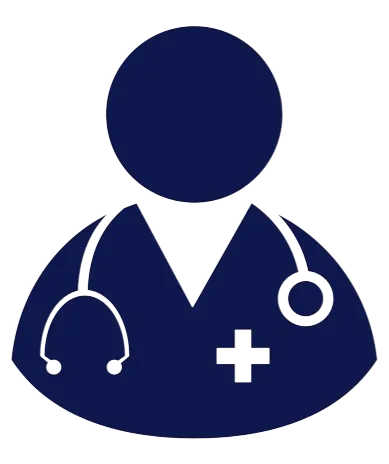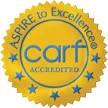
Work Injury Washington: Understanding Speech Therapy
When most people hear speech therapy, they picture someone helping a child pronounce words correctly. But for adults recovering from brain injuries, strokes, or concussions, speech-language pathology (SLP) reaches far beyond speech; it is about restoring thinking, communication, memory, and independence.
In this episode of Work Injury Washington, host Josh Cobbley, Occupational Therapist and CEO of Convivio Health, sat down with Shir Gamliel, CCC-SLP, to unpack how speech therapy transforms recovery for injured workers. Their discussion reveals that communication is only the beginning; cognitive rehabilitation, environmental adaptation, and collaboration with other disciplines are equally vital to getting patients back to work and back to life.
Finding Purpose Through Language and Healing
Shir’s journey into speech-language pathology wasn’t a straight line. “I actually started wanting to work with children,” she recalls. “Once I began studying language in depth, I fell in love with it, and when I started working with adults, I loved it even more.”
Now part of Convivio Health’s Brain Injury and Concussion Programs, Shir works primarily with adults recovering from traumatic brain injury (TBI) and concussion. Her passion lies in helping people regain everyday functions that most of us take for granted, remembering appointments, managing conversations, and balancing mental energy through a workday.
Beyond Speech: What SLPs Really Do
“Speech-language pathology is the worst-named profession,” Shir laughs. “We do so much more than speech.”
An SLP’s scope of practice extends “from the neck up.” That means helping patients with:
Cognition: memory, attention, planning, organization, problem-solving.
Language: understanding, word-finding, and expression.
Voice and Swallowing: retraining muscles after illness or injury.
Communication strategies: managing fatigue, social cues, and workplace interactions.
After a concussion or stroke, tasks like managing calendars, multitasking, or remembering a sequence of steps can suddenly feel impossible. “Our goal,” Shir explains, “is to rebuild the skills and strategies people need to participate fully in their lives again.”
Assessment: Understanding the Real-World Impact
Knowing when to refer for speech therapy often comes after a change in cognitive or communication function, following a head injury, stroke, or neurodegenerative disease like Parkinson’s or dementia.
Evaluation blends standardized testing with functional observation. “I want to understand what’s actually interfering with a person’s life,” Shir says. “It’s not just about how many words you can recall on a test; it’s about whether you can manage your day, stay on task, and follow through.”
This focus on real-life performance sets SLP apart from more traditional, paper-based assessments. The results inform highly individualized therapy plans that mirror the patient’s real environments, home, community, and workplace.
Collaboration in Multidisciplinary Care
At Convivio Health, rehabilitation isn’t siloed. Speech-language pathologists work daily alongside occupational therapists, physical therapists, neuropsychologists, psychologists, and vocational rehabilitation counselors.
“Every discipline supports the others,” Shir explains. “We meet regularly to discuss progress and coordinate goals. Sometimes we even co-treat, working together with the same patient so therapy feels more like real life.”
For example, a patient might plan and execute a cooking activity with an occupational therapist while Shir integrates memory and communication strategies. “It’s functional, meaningful, and immediately transferable to home and work,” she says.
Rebuilding Confidence and Function Through Real-Life Tasks
A hallmark of Shir’s approach is turning therapy into practical problem-solving. She gives a vivid example: “We might plan an event for 30 people, budgeting, scheduling, and organizing everything. It’s not about throwing a party; it’s about rebuilding executive function.”
These activities tap into attention, sequencing, budgeting, and collaboration, all of which mirror the demands of real jobs. “People don’t realize how much cognitive work goes into ordinary tasks,” she adds. “When they experience success in these activities, it restores confidence and momentum.”
The Role of Family and Environment
No one recovers alone. Family and caregiver involvement, Shir emphasizes, is crucial.
“Patients might see me one or two hours a week. Their families are with them the rest of the time,” she explains. Training families in communication strategies helps extend therapy into daily life, whether that’s using shorter sentences, labeling items for organization, or adjusting the home environment for safety and attention challenges.
For example, in a patient with left neglect after brain injury, Shir might teach families to place key items on the left side to gently stimulate awareness or relocate safety devices to reduce risk. “Those environmental adaptations make recovery smoother and safer,” she says.
Assistive Technology and the Future of SLP
Technology, Shir believes, is an untapped ally. “Phones and tablets have incredible built-in accessibility tools,” she explains. Simplified home screens, large buttons, and voice commands can turn frustration into independence for patients with cognitive or visual deficits.
She trains both patients and caregivers to use these features, turning everyday devices into assistive technology. “We underestimate how complex our phones are. Just simplifying how someone makes a call or sends a text can change their life.”
Helping Employers Support Workers Returning After Concussion
Injured workers often face another challenge, returning to demanding jobs before their brains are ready. Shir uses a simple but powerful metaphor: energy as a battery.
“After a concussion, your battery may only charge to 50%. Every task drains it faster,” she says. “We teach pacing, finding that Goldilocks zone where patients are challenged but not depleted.”
This concept underpins graduated return-to-work programs, where schedules and tasks are gradually increased as cognitive endurance improves. Educating employers on these realities reduces frustration and supports sustainable recovery. “It’s about building durability, not just getting back to work quickly,” Josh adds.
Metacognition: Thinking About Thinking
Perhaps the most transformative part of speech therapy lies in teaching metacognition, awareness of one’s own thinking.
“Many of our patients have been experts at their jobs for decades,” Shir says. “When an injury disrupts automatic skills, they have to consciously relearn how to plan, check, and double-check.”
By rehearsing realistic scenarios like walking through a typical workday patients rebuild self-monitoring skills. This “thinking about thinking” process reduces errors, improves problem-solving, and empowers independence.
“Sometimes just the cue to pause and think it through makes all the difference,” she notes.
Why Awareness Matters for Employers and Case Managers
For claims managers, vocational counselors, and employers, understanding what speech therapy actually addresses can change outcomes.
Three key takeaways stand out:
Speech therapy isn’t only about speech. It’s cognitive rehabilitation, memory retraining, and communication coaching.
Fatigue and pacing are real. Workers may need flexible schedules and gradual reintroduction to full duties.
Family and environment are part of treatment. Support at home accelerates progress at work.
When these stakeholders understand the scope of SLP, they can align goals and resources, preventing unnecessary setbacks.
The Bottom Line
Speech therapy is one of the most misunderstood disciplines in rehabilitation, but also one of the most transformative. From concussion recovery to workplace reintegration, SLP bridges the gap between medical stability and functional independence.
As Shir Gamliel reminds us, the heart of the work is empowerment.
“Our goal is to help people participate fully in their lives again at home, at work, and in their communities.”
For Washington’s injured workers, that means more than restoring language it means restoring confidence, connection, and the ability to think, plan, and thrive.
About Shir Gamliel
Shir Gamliel, CCC-SLP, is a Speech-Language Pathologist at Convivio Health specializing in adult rehabilitation for traumatic brain injury, concussion, and cognitive-communication disorders. With expertise in executive function, environmental adaptation, and multidisciplinary rehabilitation, she helps injured workers rebuild communication, memory, and workplace readiness.






